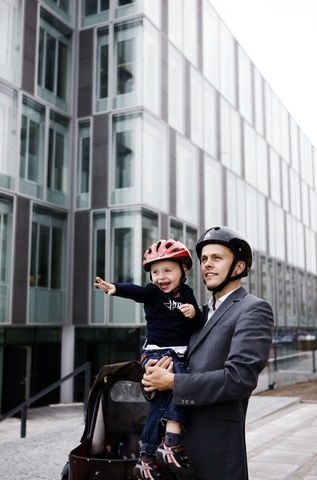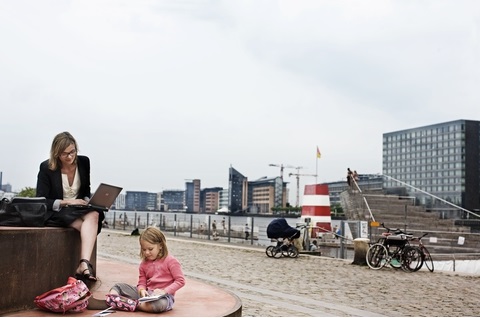Flexicurity – Danish Golden Triangle
Flexicurity 
When people talk about the Danish labour market they often use the term “flexicurity” to describe the model which is successfully managing the challenges of globalisation and securing steady economic growth and employment.
Studies show that Danes are positive about globalisation and do not fear losing their jobs. Rather they seek opportunities for new and better jobs. This is partly ascribed to the flexicurity model which promotes adaptability of employees and enterprises.
A Golden Triangle
Flexicurity is a compound of flexibility and security. The Danish model has a third element - active labour market policy - and together these elements comprise the golden triangle of flexicurity.
Flexicurity is a compound of flexibility and security. The Danish model has a third element - active labour market policy - and together these elements comprise the golden triangle of flexicurity.
One side of the triangle is flexible rules for hiring and firing, which make it easy for the employers to dismiss employees during downturns and hire new staff when things improve. About 25% of Danish private sector workers change jobs each year.
The second side of the triangle is unemployment security in the form of a guarantee for a legally specified unemployment benefit at a relatively high level - up to 90% for the lowest paid workers.
The third side of the triangle is the active labour market policy. An effective system is in place to offer guidance, a job or education to all unemployed. Denmark spends approx. 1.5% of its GDP on active labour market policy.
 Dual advantages
Dual advantages The aim of flexicurity is to promote employment security over job security. The model has the dual advantages of ensuring employers a flexible labour force while employees enjoy the safety net of an unemployment benefit system and an active employment policy.
The Danish flexicurity model rests on a century-long tradition of social dialogue and negotiation among the social partners. The development of the labour market owes much to the Danish collective bargaining model, which has ensured extensive worker protection while taking changing production and market conditions into account. The organisation rate for workers in Denmark is approx. 75%.
The Danish model is supported by the social partners headed by the two main organisations - The Danish Confederation of Trade Unions (LO) and The Confederation of Danish Employers (DA). The organisations - in cooperation with the Ministry of Employment have also jointly contributed to the development of common principles of flexicurity in the EU, resulting in the presentation of the communication "Towards common principles of flexicurity" by the European Commission in mid-2007.
Inspiring the EU
The European Council subsequently adopted a set of Council Conclusions on flexicurity in December 2007, by which the common principles of flexicurity will guide EU member states when implementing reforms in order to meet the aims of the Lisbon Strategy of Growth and Jobs.
The European Council subsequently adopted a set of Council Conclusions on flexicurity in December 2007, by which the common principles of flexicurity will guide EU member states when implementing reforms in order to meet the aims of the Lisbon Strategy of Growth and Jobs.
Photos:T.Hjamo/www.visitcopenhagen.dk



 EUR 4.2779 zł
EUR 4.2779 zł USD 3.8317 zł
USD 3.8317 zł DKK 0.5735 zł
DKK 0.5735 zł SEK 0.3766 zł
SEK 0.3766 zł NOK 0.3649 zł
NOK 0.3649 zł